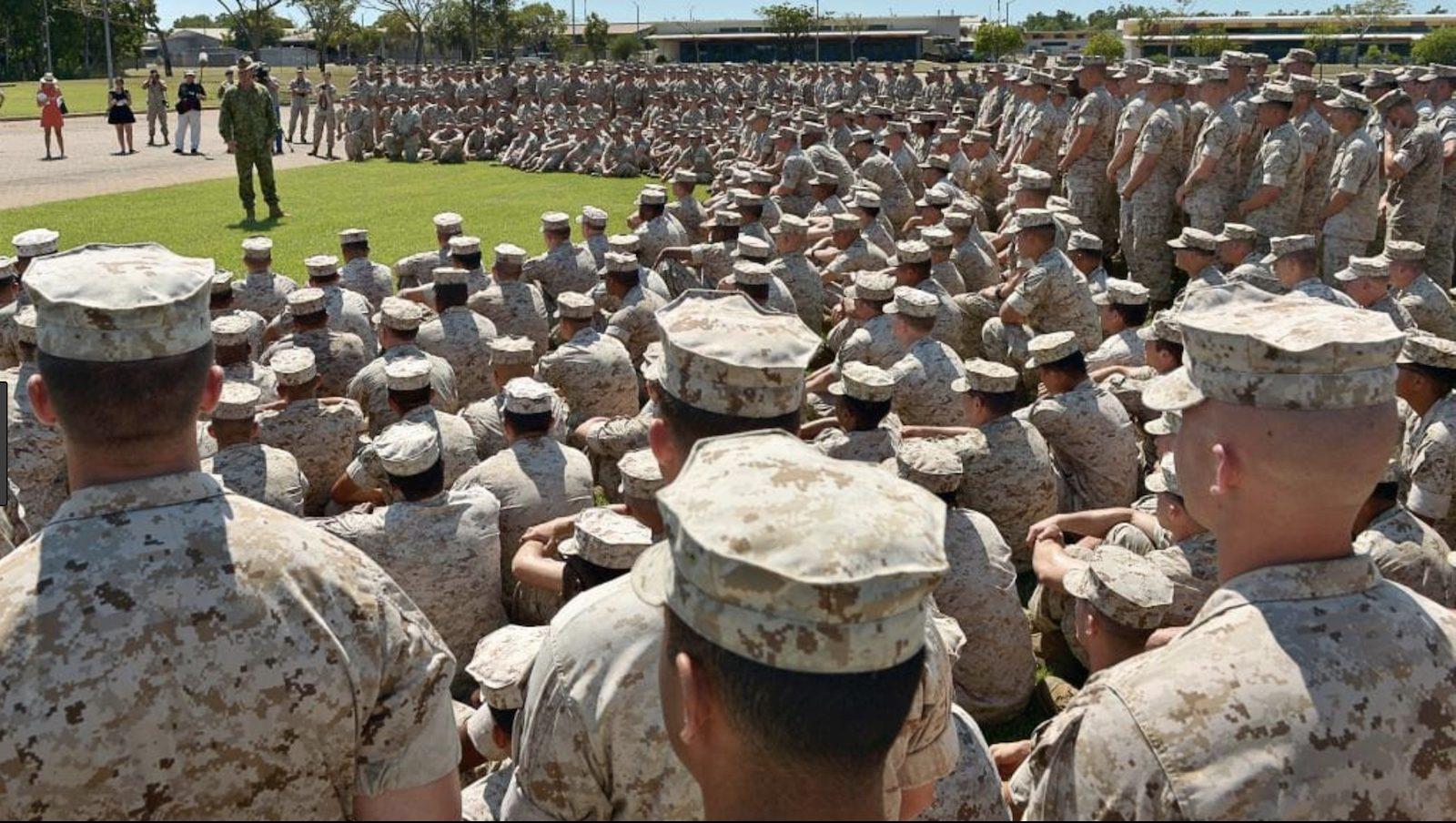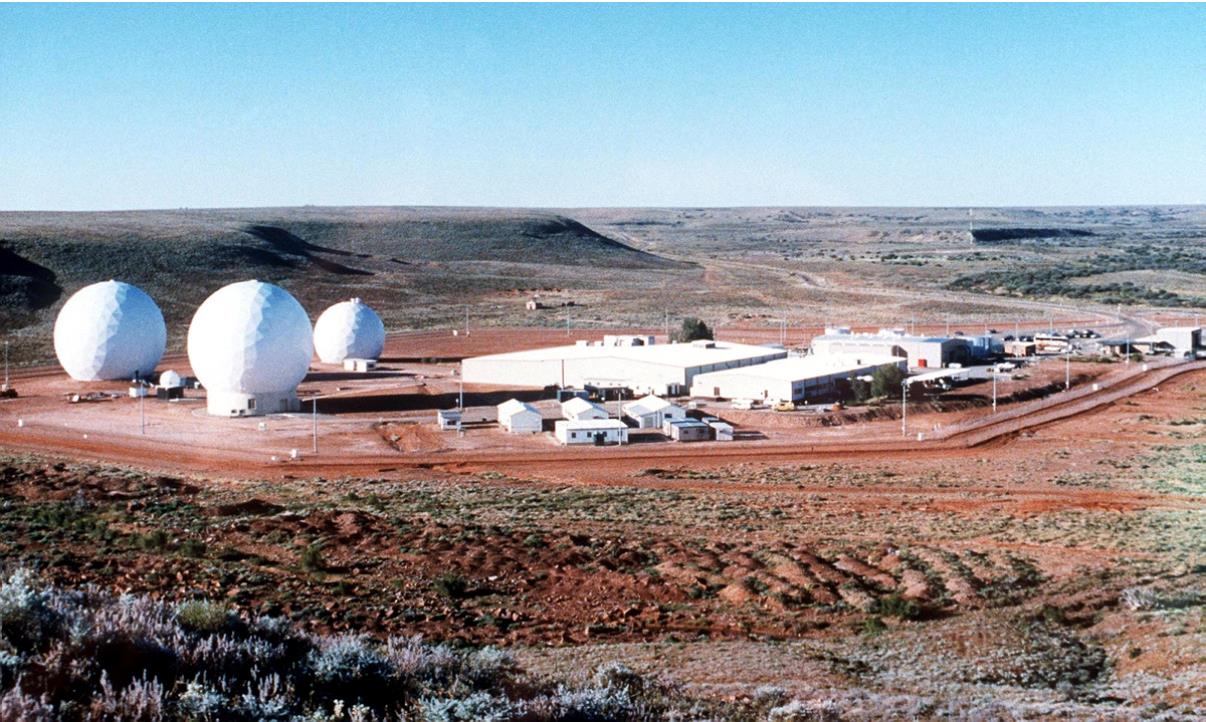(MENAFN- Asia Times)
SYDNEY – Australia's government has been pumping out announcements of advanced military asset acquisitions to face China's rising strategic challenge – including nuclear-powered submarines, frigates, and hypersonic missiles – but their delivery is a decade or more away.
What the country is offering more immediately to the United States and its aligned powers like Japan and India is a more mundane asset: real estate.
The northern port of Darwin, facing Southeast Asia and the equatorial transit points between the Pacific and Indian oceans, and its sparsely populated hinterland of the Northern Territory, is being pushed as the“southern anchor” of interlocking zones of dominance by democratic powers pushing back against China.
“Darwin offers the capability to train, sustain and co-ordinate allied- and partner-nation military forces in a secure location within the world's most demanding geostrategic location,” the Northern Territory's chief minister, Michael Gunner, wrote recently.
Already nearly US$6 billion has been allocated to defense-related upgrades to Darwin and the Tindal airbase of the Royal Australian Air Force inland. The RAAF is preparing to operate its new F-35 strike fighters to Tindal, along with air-tankers, P-8 maritime patrol aircraft, and Triton oceanic surveillance drones.
The Royal Australian Navy is augmenting its existing Darwin fleet of patrol boats with helicopter-carrying offshore patrol vessels that are four times heavier, expanding its small shore base, and contributing to a new ship-lift for repairs to both civil and military vessels.
Since 2012, the United States Marine Corps has been sending up to a full battle-group – comprising up to 2,500 troops plus advanced equipment like the Osprey vertical take-off transport and the High Mobility Artillery Rocket System – on annual exercises with Australian and other forces in the Northern Territory during the mid-year dry season.
Australian Defense Minister Peter Dutton has indicated more US land and air units will be added around this six-month rotation. Work began last month on a 300 million-liter bulk fuel depot in Darwin Harbor under a US Defense Logistics Agency contract worth $190 million.
But there is one awkward fact –“the elephant in the room” according to analyst John Coyne of the Australian Strategic Policy Institute (ASPI) in Canberra.
Since 2015, the port of Darwin has been operated under a 99-lease by a Chinese stevedoring company called Landbridge, owned by a state-owned enterprise in Shandong, after an A$506 million ($360 million) one-off payment to the Northern Territory government, whose finances are constrained with a population of only 247,000.
The deal was ticked off at the time by Australia's Defense Department and security agencies as bearing no risk to national security. Privatization of ports was in vogue worldwide. Similar deals have seen Chinese firms take over operations at Pireus in Greece and Haifa in Israel, among US allies.

US Marines from the 1st Battalion, 1st Marines arrive in Darwin as part of the Marine Rotational Force in 2016. Photo: Twitter.
But urban myths quickly sprung up that the port has been“sold” to China, that Landbridge is positioned to spy on US and other military maneuvers and collect emissions from berthed naval ships.
It did not help that the then-Australian trade minister who supported the lease, to help develop Australia's north as a global“food bowl”, later collected a post-retirement annual A$880,000 retainer from Landbridge.
Nor that Landbridge itself promoted the Darwin port in corporate videos as an“important maritime cooperation pivot for the One Belt and One Road to contribute to China a more powerful port strength,” referring to Chinese leader Xi Jinping's Belt and Road Initiative, or BRI. The videos are no longer online.
The atmospherics have only grown worse as Xi Jinping steadily dropped the“lie low” posture of his predecessors and asserted ambitions as a global power.
Over the past five years, Australia's relations with China have chilled as Canberra acted to limit its influence operations and criticized its actions on finding the origins of the Covid-19 virus, on rights abuses in Xinjiang and military threats to Taiwan. China responded by blocking some $14 billion in imports from Australia.
Last year, Prime Minister Scott Morrison's government enacted new legislation asserting control over foreign tie-ups by all levels of government, and promptly used it to end a BRI partnership by Victoria state. Morrison also ordered his Defense Department to review its advice about the Landbridge lease, promising to be guided by it.
With his conservative coalition behind in the polls and federal elections due by May, Morrison has been signaling this will be partly a“khaki election campaign”, as local commentators put it. He and Defense Minister Dutton are already accusing rival Anthony Albanese of the Australian Labor Party of being China's preferred choice in the election because of likely softness towards Beijing.
But somewhat embarrassingly for him, the Defense Department has stood by its 2015 advice, according to press reports that have not been contradicted.
Alan Dupont, a leading strategic commentator and head of Sydney-based political risk analysis outfit Cognoscenti Group, says it appears Canberra is divided on what to do.
“One view is that Landbridge signed the lease back in 2015 legitimately, it ticked all the boxes, it was reviewed by Defense and given another big tick. Therefore on what basis would you take the lease back?” Dupont said.
“And this has broader implications for Australia's attempt to position itself as a welcoming place for foreign investment, including Chinese investment. So it's not surprising the economic agencies are arguing the lease should not be taken back because it would have negative implication for investment.”
The contrary view from the national security side is not monolithic, Dupont said.
“The security hawks would argue the world has changed quite dramatically since the lease was signed, and even if the Landbridge lease doesn't provide a direct, here-and-now security threat to Australia, it is a real obstacle to building our alliance relationship with the United States and other countries because it's the perception issue, the perception being that the Chinese own Darwin Harbor.”
The Darwin port. Photo: Northern Territory government
ASPI's Coyne leans to this viewpoint.“The Defense review of the decision took a very 1940s viewpoint on security,” he said.“There's a very low risk from someone sitting alongside and doing sketches or taking photos of antenna arrays and that sort of war-fighting capability. The radars, they never turn those on until they're well out to sea anyway. So about collecting emissions, it is a really unsophisticated way of looking at the problem.”
“The real issue here is about the future of the port and who gets to decide on investment and where the development occurs,” Coyne said.“What you have is a big chunk of Darwin Harbor, the port and a lot of other environs that are part of that agreement, and the future development of those, is controlled by a Chinese state-owned organization.”
“It's not a 1940s version of security – loose lips sink ships,” Coyne adds.“It's a version of security where we are now: ensuring that we have security of supply chains and we have the infrastructure we need.”
Coyne thinks there is a“good chance” that Morrison will take a decision to buy out the Landbridge lease, endorsed by his cabinet's national security committee to the election campaign, though he says another option could be to bring in an Australian investor and dilute Landbridge's control.
Dupont thinks it a“line-ball” decision between the investment viewpoint – Morrison is also trying to project his coalition as better economic managers than Labor – and hawks like the defense minister.
“My gut instinct is that Morrison, even though he wants to have a khaki election, may decide not to take the lease back before the election, and to carry it over for a future government, that his inclination is to live with the lease as it is,” Dupont says.
“My own view is that Australia can live with the Landbridge lease, that there are other options for managing the perception problem, that it should not be an overwhelming obstacle to a more ambitious relationship with the United States and other allies. It's about how the issue is framed and the narrative that supports it.”
Dupont points out that Darwin Harbor is five times the area of Sydney Harbor, and the part controlled by Landbridge is small, though closest to the Darwin city center.
“There are many locations in the harbor and outside the harbor where you could build defense infrastructure and capabilities that would not in any way be affected by the Landbridge lease,” Dupont said.
“My solution would be to work around the Landbridge lease, so the non-sensitive stuff can be managed as it is. If you want to build sensitive defense installations and infrastructure there are many other locations you could do that.”
Darwin is not the easiest and most profitable sea-port anyway, with a tidal range up to eight meters, periodic appearances by giant saltwater crocodiles and two to three cyclones forming each wet season in Northern Territory waters.
Currently, Darwin's road and rail links bringing up export goods from southern Australia are cut by floodwaters. In its first five years, Landbridge reported A$151.1 million in accumulated losses from A$231.8 million in revenue.
The United States has a long history of involvement in the Northern Territory, going back to the Pacific War and then from the late 1960s with the Pine Gap satellite station near Alice Springs, originally to receive narrow-broadcast transmissions from spy satellites on polar orbits over the Soviet Union, without Soviet“fishing trawlers” be able to catch the satellite downloads.

Pine Gap satellite station. Photo: ASPI / Facebook
Alice Springs was“a suitable piece of real estate” for this function, as Desmond Ball, the academic who revealed Pine Gap's role, put it in a celebrated book with that title.
The station continues to operate for space-based intelligence gathering and war-fighting command, including drone strikes. This month a former head of Britain's MI6 external intelligence agency, Sir Richard Dearlove, said Pine Gap was“a sophisticated listening post, all right, and a lot else besides.”
“And it's hugely important strategically to the US and to the western alliance because of its position, its geographical location,” Dearlove said on a global affairs podcast called One Decision. He said it was“crucial to, let's say, western coverage of China.”
US and other forces are unlikely to be doing anything near as sensitive in Darwin, should Landbridge remain. Storage of ammunition, fuel and weapons could be dispersed, and much of the training activity anyway would be out in the sparsely-populated hinterland where, for example, F-35s could practice electronic warfare without the risk of frying computers and TV sets on the ground.
“Darwin becomes essentially what it was in the Second World War, a place for projecting power into the Western Pacific and the Indian Ocean as well as a kind of safe place, or relative sanctuary for democratic allies wanting to do things, training, or support their ships in the region,” said Dupont.“If you look around the region there is nothing that compares with the territory as a suitable piece of real estate.”
MENAFN13022022000159011032ID1103687401